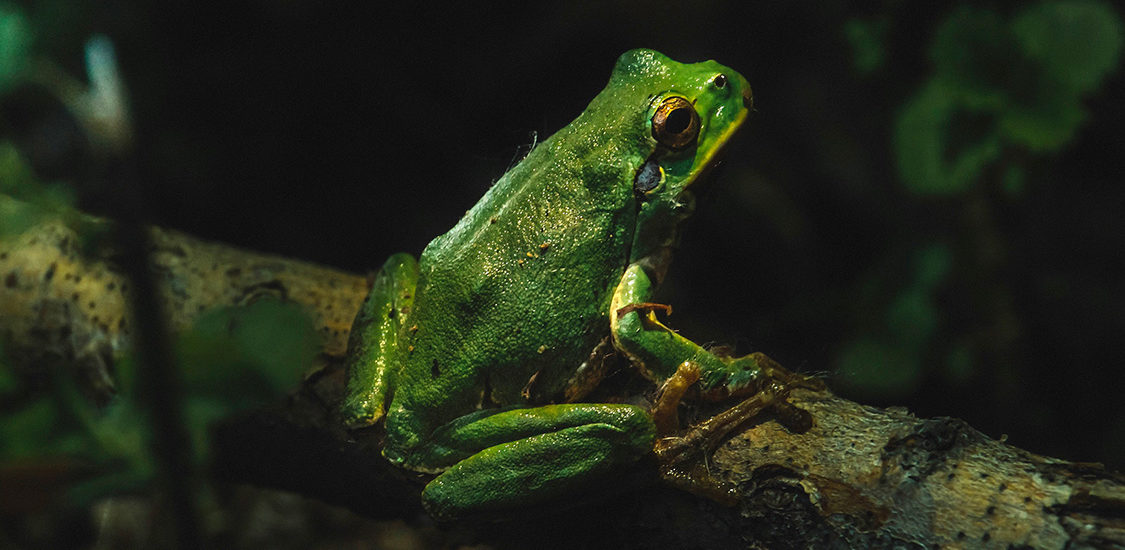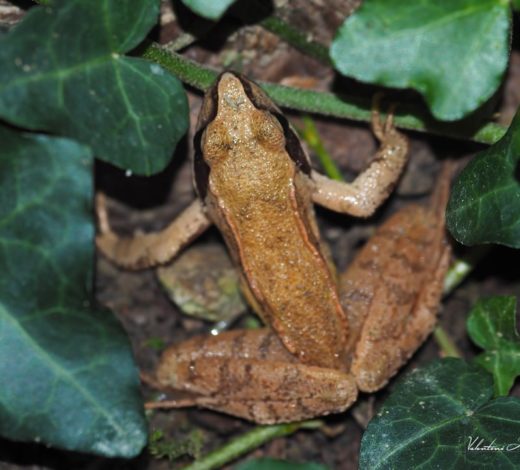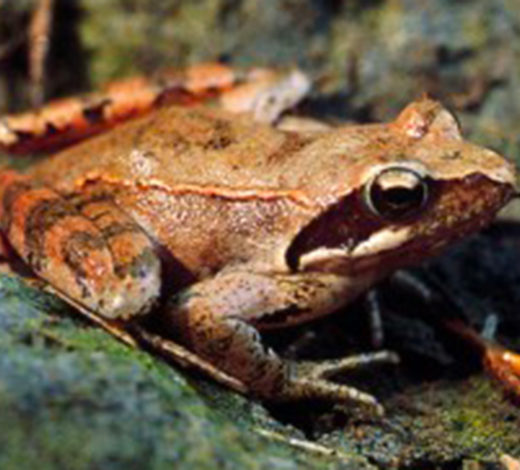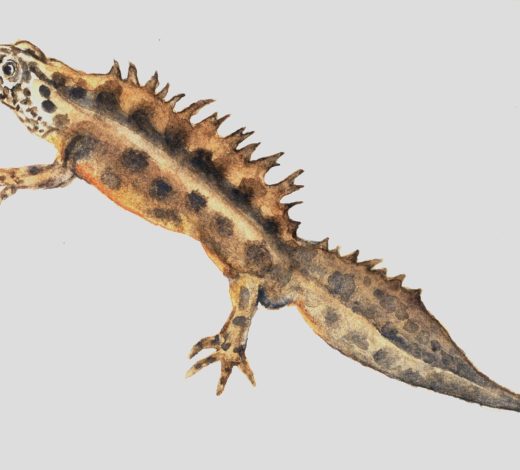Italian Tree Frog
(Hyla intermedia)
A species protected by Regional Law 10/2008.
This small amphibian is part of the Hyilidae family.
Distribution
A sub-endemic species of the Italian peninsula.
Description
They can be recognized for their characteristic croak and colouring, with a smooth, green back and whitish stomach. Italian tree frogs are very similar to European tree frogs (Hyla arborea), which are present throughout Europe, but they have been shown to be different species after careful genetic analysis. The Italian tree frog is a climbing species, due to the adhesive power of the disks on its toes. Their back legs are very strong, giving them the ability to make large jumps between the fronds of trees and bushes, where adults spend a large part of their active period. Reproduction occurs between March and August and the eggs hatch within 15–20 days. The young complete their development in about three months. Their diet consists of insects, which are often captured in flight.
Habitat
They live in open, pure or mixed broadleaf forests or in riparian thickets near lakes, marshes, ponds, and waterways, or in scrub and moorlands. They may also be present in anthropized environments, such as orchards, vineyards, and urban parks. They are active at sunset and at night, when they come down from the plants to hunt and to drink water.
Observation in the Torbiera Reserve
They can be spotted in the Reserve by attentive eyes in spring. Depending on the altitude, they go into hibernation between September and December and remain so until February/March, retiring into holes in the ground, abandoned burrows, rocky ravines, and among the roots of plants.



